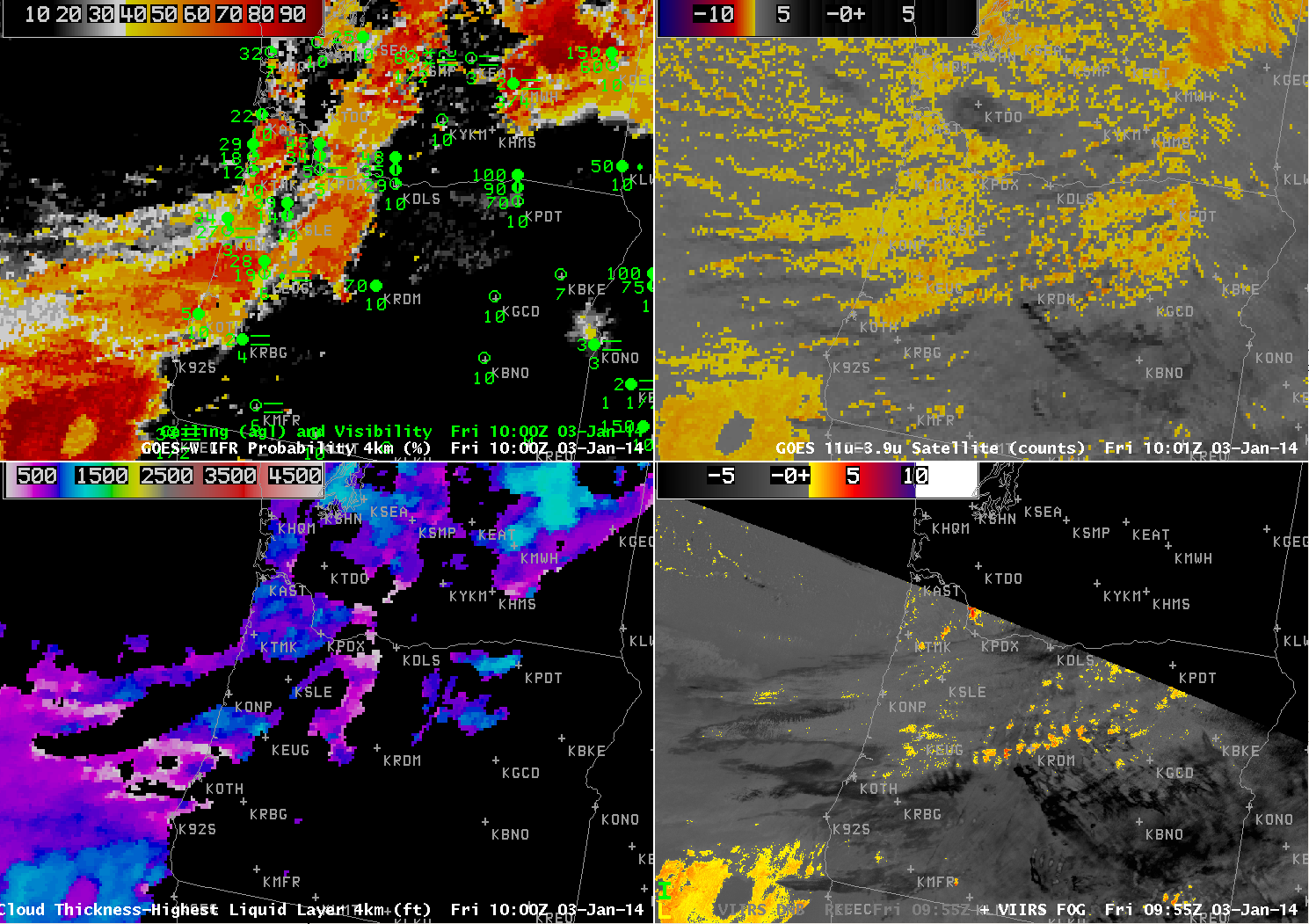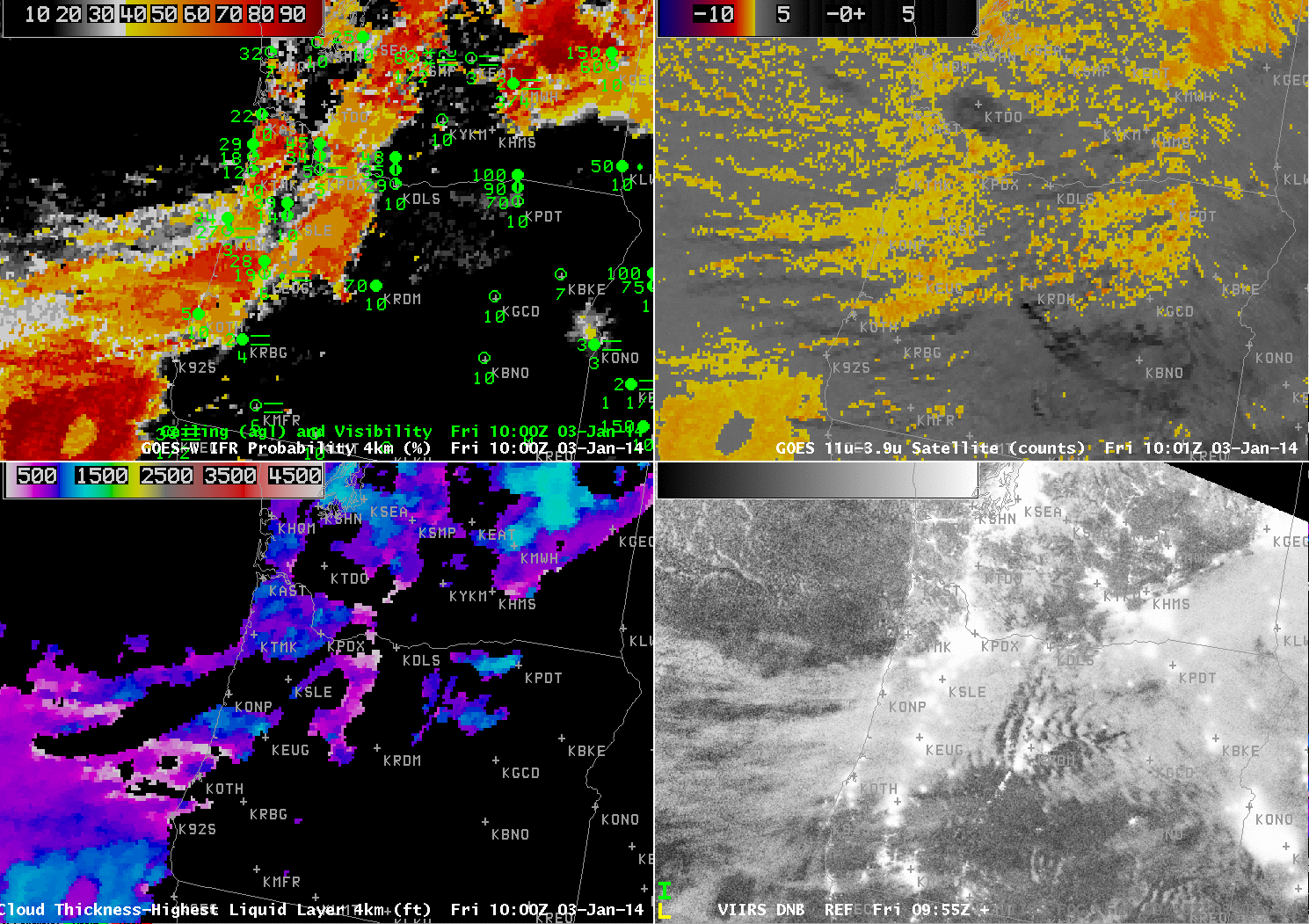
GOES-R IFR Probabilities from GOES-15 (upper left), GOES-15 Brightness Temperature Difference (10.7 µm – 3.9 µm) Fields (upper right), GOES-R Cloud Thickness from GOES-15 (lower left), Suomi/NPP Brightness Temperature Difference (lower right), times as indicated, 3 January 2014 (click image to animate)
One benefit of the GOES-R IFR probabilities is its consistency from hour to hour. In the animation above, the region of higher IFR Probabilities associated with a southward-propagating front over Oregon shows good hour-to-hour consistency. In contrast, the Brightness Temperature Difference field (upper right in the figure) suffers from the presence of higher clouds (denoted in the enhancement by darker regions). As the high IFR Probabilities expand southward into southern Oregon, reported visibilities/ceilings decrease towards IFR conditions. In the animation, regions of high clouds show up in the Cloud Thickness product as regions of missing data: Cloud Thickness is of the highest water-based cloud. If the highest cloud detected by satellite is mixed-phase, or ice, Cloud Thickness is not computed. Cloud Thickness is also not computed in the 1600 UTC imagery because that time is near sunrise, and cloud thickness is not computed in twilight conditions.
Suomi/NPP provided a view of the scene as well, and the Day/Night Band showed the band of frontal clouds well. The brightness temperature difference field suggests that the cloud band was not necessarily low cloudiness, although the higher IFR Probabilities (and reduced ceilings and visibilities) testify to the presence of low clouds underneath the middle- and higher-level clouds.

GOES-R IFR Probabilities from GOES-15 (upper left), GOES-15 Brightness Temperature Difference (10.7 µm – 3.9 µm) Fields (upper right), GOES-R Cloud Thickness from GOES-15 (lower left), Toggle between Suomi/NPP Day/Night band and Brightness Temperature Difference (lower right), ~1000 UTC, 3 January 2014 (click image to enlarge)
